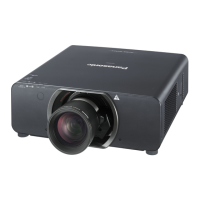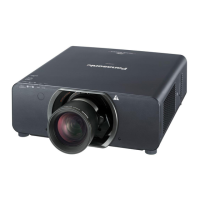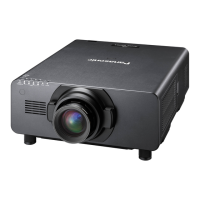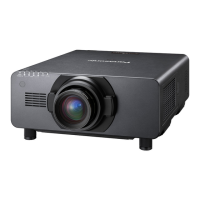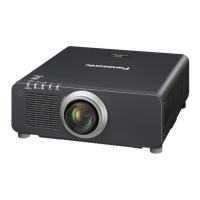RULES OF THUMB FOR ALPHA PARTICLES
1. An alpha particle of at least 7.5 MeV energy is needed to
penetrate the nominal protective layer of the skin
(7 mg / cm or 0.07 mm).
2
2. The alpha emissions and energies of the predominant
particles from 1 ìg of several common materials are:
DPM per ìg Alpha Energy (MeV)
Pu 39,000,000 5.50 (72%)
238
Pu 140,000 5.15 (72.5%)
239
Pu 500,000 5.16 (76%)
240
Pu 8,700 4.90 (76%)
242
Natural U 1.5 4.20 (37%), 4.77 (36%)
a
Oralloy (93% U) 160 4.39 (~ 80%)
235
Natural Th 0.5 4.01 (38%), 5.43 (36%)
b
D-38 (DU, tuballoy) 1 4.20 (~ 60%)
Includes U in equilibrium.
a 234
Includes Th in equilibrium. Depending upon the time since
b 228
chemical separation, Th can decrease to give a net
228
disintegration rate lower than 0.5.
With 2p (50%) geometry, the surface of a thick uranium metal
c.
(tuballoy) source gives ~ 2400 alpha counts/min per cm .
2
Depleted uranium (D-38) gives ~ 800 alpha cpm/cm .
2
3. Alpha particles lose about 0.8 MeV per mg/cm density
2
thickness of the attenuating material.
4. Detector window thicknesses cause alpha particles to lose
energy at about 0.8 MeV per mg/cm of window thickness.
2
Therefore, a detector with a window thickness of 3 mg/cm
2
(such as sealed gas-proportional pancake alpha/beta
detectors and pancake GM detectors) will not detect alpha
emitters of less than 3 MeV.
RULES OF THUMB FOR ALPHA PARTICLES
1. An alpha particle of at least 7.5 MeV energy is needed to
penetrate the nominal protective layer of the skin
(7 mg / cm or 0.07 mm).
2
2. The alpha emissions and energies of the predominant
particles from 1 ìg of several common materials are:
DPM per ìg Alpha Energy (MeV)
Pu 39,000,000 5.50 (72%)
238
Pu 140,000 5.15 (72.5%)
239
Pu 500,000 5.16 (76%)
240
Pu 8,700 4.90 (76%)
242
Natural U 1.5 4.20 (37%), 4.77 (36%)
a
Oralloy (93% U) 160 4.39 (~ 80%)
235
Natural Th 0.5 4.01 (38%), 5.43 (36%)
b
D-38 (DU, tuballoy) 1 4.20 (~ 60%)
Includes U in equilibrium.
a 234
Includes Th in equilibrium. Depending upon the time since
b 228
chemical separation, Th can decrease to give a net
228
disintegration rate lower than 0.5.
With 2p (50%) geometry, the surface of a thick uranium metal
c.
(tuballoy) source gives ~ 2400 alpha counts/min per cm .
2
Depleted uranium (D-38) gives ~ 800 alpha cpm/cm .
2
3. Alpha particles lose about 0.8 MeV per mg/cm density
2
thickness of the attenuating material.
4. Detector window thicknesses cause alpha particles to lose
energy at about 0.8 MeV per mg/cm of window thickness.
2
Therefore, a detector with a window thickness of 3 mg/cm
2
(such as sealed gas-proportional pancake alpha/beta
detectors and pancake GM detectors) will not detect alpha
emitters of less than 3 MeV.
RULES OF THUMB FOR ALPHA PARTICLES
1. An alpha particle of at least 7.5 MeV energy is needed to
penetrate the nominal protective layer of the skin
(7 mg / cm or 0.07 mm).
2
2. The alpha emissions and energies of the predominant
particles from 1 ìg of several common materials are:
DPM per ìg Alpha Energy (MeV)
Pu 39,000,000 5.50 (72%)
238
Pu 140,000 5.15 (72.5%)
239
Pu 500,000 5.16 (76%)
240
Pu 8,700 4.90 (76%)
242
Natural U 1.5 4.20 (37%), 4.77 (36%)
a
Oralloy (93% U) 160 4.39 (~ 80%)
235
Natural Th 0.5 4.01 (38%), 5.43 (36%)
b
D-38 (DU, tuballoy) 1 4.20 (~ 60%)
Includes U in equilibrium.
a 234
Includes Th in equilibrium. Depending upon the time since
b 228
chemical separation, Th can decrease to give a net
228
disintegration rate lower than 0.5.
With 2p (50%) geometry, the surface of a thick uranium metal
c.
(tuballoy) source gives ~ 2400 alpha counts/min per cm .
2
Depleted uranium (D-38) gives ~ 800 alpha cpm/cm .
2
3. Alpha particles lose about 0.8 MeV per mg/cm density
2
thickness of the attenuating material.
4. Detector window thicknesses cause alpha particles to lose
energy at about 0.8 MeV per mg/cm of window thickness.
2
Therefore, a detector with a window thickness of 3 mg/cm
2
(such as sealed gas-proportional pancake alpha/beta
detectors and pancake GM detectors) will not detect alpha
emitters of less than 3 MeV.
RULES OF THUMB FOR ALPHA PARTICLES
1. An alpha particle of at least 7.5 MeV energy is needed to
penetrate the nominal protective layer of the skin
(7 mg / cm or 0.07 mm).
2
2. The alpha emissions and energies of the predominant
particles from 1 ìg of several common materials are:
DPM per ìg Alpha Energy (MeV)
Pu 39,000,000 5.50 (72%)
238
Pu 140,000 5.15 (72.5%)
239
Pu 500,000 5.16 (76%)
240
Pu 8,700 4.90 (76%)
242
Natural U 1.5 4.20 (37%), 4.77 (36%)
a
Oralloy (93% U) 160 4.39 (~ 80%)
235
Natural Th 0.5 4.01 (38%), 5.43 (36%)
b
D-38 (DU, tuballoy) 1 4.20 (~ 60%)
Includes U in equilibrium.
a 234
Includes Th in equilibrium. Depending upon the time since
b 228
chemical separation, Th can decrease to give a net
228
disintegration rate lower than 0.5.
With 2p (50%) geometry, the surface of a thick uranium metal
c.
(tuballoy) source gives ~ 2400 alpha counts/min per cm .
2
Depleted uranium (D-38) gives ~ 800 alpha cpm/cm .
2
3. Alpha particles lose about 0.8 MeV per mg/cm density
2
thickness of the attenuating material.
4. Detector window thicknesses cause alpha particles to lose
energy at about 0.8 MeV per mg/cm of window thickness.
2
Therefore, a detector with a window thickness of 3 mg/cm
2
(such as sealed gas-proportional pancake alpha/beta
detectors and pancake GM detectors) will not detect alpha
emitters of less than 3 MeV.

